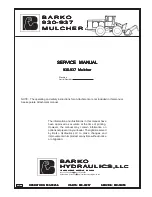
164
9
Maintenance and Care of the piston burette
The preservation of the proper functioning of the device requires testing and maintenance work to
be performed on a regular basis. Regular inspections are essential prerequisites for the correctness of
the volume and the proper functioning.
The accuracy of the volume is determined by all chemicals-carrying components (piston, cylinder,
valve, titration tip and hoses). These parts are subject to wear and tear. The piston and cylinder are
subject to particular strain, hence they require special attention.
Heavy strain:
Use of e.g. concentrated solutions, reagents and chemicals (> 0.5 mol/L); chemicals attacking glass,
such as fluorides, phosphates, alkali solutions; solutions with a tendency to crystallising out;
Fe (III) chloride solutions; oxidising and corroding solutions such as iodine, potassium permanganate,
Cer (III), Karl-Fischer titration agent, HCl; solutions with a viscosity of > 5 mm
2
/s; frequent, or even
daily use.
Normal strain:
Use of solutions, reagents and chemicals (up to 0.5 mol/l) which do not attack glass, crystalize out or
corrode.
Interrupted use
:
If the dosing system is not in use for more than two weeks, we recommend emptying and cleaning the
dosing unit [6]. This applies in particular under the operating conditions referred to in the „Heavy
strain” section. If this recommendation is not adhered to, the piston of the valve may become leaking,
this may result in damage to the piston burette.
If the liquid is left within the system, you will also have to reckon with corrosion and an alteration of
the solutions used over time, which includes e.g. crystalisation. Considering that as of the state of the
art there are no plastic hoses available for the use in titration equipment which would be perfectly free
of diffusion phenomena, particular attention is to be paid to the range of the hose lines.
We recommend the following inspection and maintenance
work:
Heavy strain
Normal strain
Simple cleaning:
Wiping off splashed chemicals from the outer surface [1]
Whenever required in
operation
Whenever required in
operation
Sight check:
Check for leakage in the area of the dosing system. [2]
Is the piston tight? [3]
Is the valve tight? [4]
Titration to clear? [5]
Weekly,
when putting back into
operation
Monthly,
when putting back into
operation
Basic cleaning of the dosing system:
All parts of the dosing system to be cleaned separately. [6]
Every three months
Whenever necessary
Technical inspection:
Check for air bubbles in the dosing system. [7]
Visual inspection
Check of the electrical connections. [8]
Semi-annually,
when putting back into
operation
Semi-annually,
when putting back into
operation
Verification of the volume according to ISO 8655
Perform basic cleaning
Inspection according to ISO 8655 Part 6 or Part 7. [9]
Semi-annually
Annually
Depending on the respective application, there may be different specifications for the entirety of the
inspection and maintenance work to be performed. The individual intervals may be extended if no
complaints occur, but they will have to be shortened again as soon as any problem has arisen
The inspection of the metrological reliability including maintenance work is offered as a service
(including a manufacturer’s certificate, if so ordered). In this case the titration device is to be sent in.
Please contact the service (see backside of this manual).







































